About ClimateWatch
ClimateWatch was developed by Earthwatch with the Bureau of Meteorology and The University of Melbourne to understand how changes in temperature and rainfall are affecting the seasonal behaviour of plants and animals. The first continental phenology project in the Southern Hemisphere, ClimateWatch enables everyone to be involved in collecting and recording data that will help shape our response to climate change.
Timing is everything
Climate change is affecting rainfall and temperature across Australia, and is consequently triggering changes in the established flowering times, breeding cycles and migration movements and other phenological changes. Essentially ClimateWatch is based on phenology, the study of periodic plant and animal life cycle events and how these are influenced by seasonal and interannual variations in climate.
Indicator Species
An indicator species is an organism whose presence, absence, or abundance reflects a specific environmental condition. Species have been selected based on the advice of our Science Advisory Panel. Our list includes both native and introduced species that meet our four essential selection criteria. In addition to meeting our essential criteria, species have also been selected as they meet optional criteria, i.e. indigenous.
The ClimateWatch App was first released back in 2009. In 2020 it received a significant upgrade through app developer Spotteron.The new app has a wide range of advanced features, integrated tools and enhanced functionality including interactive maps and social motivation for users with regular updates and high ueability.
Future updates will see Species profiles and images to assist with identification and expanded Trails features.
Make your contributions and take Climate Action all in one elegant app.
The app is free to download in app stores.
Increasing global temperatures
It's well understood that climate change will lead to an increase in global average temperatures. But what does a 2° C average increase really mean? You might be surprised to hear that the difference between an ice age period and today's temperature is just 2° C on average. The keyword here is 'on average'. It's not simply the difference between a 20° C day and a 22° C day, but average temperatures across the world over an entire year.
Most places on the planet will get far warmer, some will get drier and others wllh be much wetter. And our polar ice caps will melt. More 'extremes' is something we will become accustomed to. Although there are many apparent contradictions some consensus on major impacts are emerging. There will always be uncertainty in understanding a system as complex as the world’s climate; however, there is now strong evidence that significant global heating is occurring.
A few thousand years ago plants and animals would have been able to adapt to climate change by moving, either immediately or gradually over generations. Now, as wildlife is increasingly isolated in protected areas, they are no longer able to move as the regions outside the protected areas are filled with agriculture or human habitation. As a result, scientists predict that over a million species will be threatened with extinction.
Make a difference
ClimateWatch was developed to understand the effects climate change is having on Earth's natural processes. Essentially, ClimateWatch is based on phenology, the study of periodic events in biological life cycles and how these are influenced by seasonal and interannual variations in climate. Many studies have already provided insight into the relationship between climate variables, such as temperature and rainfall, to the timing of these phenophases (an observable stage or phase in the annual life cycle of a plant or animal that can be defined by a start and end point).
By contributing to ClimateWatch you are taking direct action to make a positive difference to the Climate crisis.
We've had a go at answering some of the questions we get regularly from our invaluable ClimateWatchers. Please let us know if we've missed anything or contact us for any further questions or enquires.
App
- Why are photos compulsory?
Upon advice from our science advisory panel and other large-scale citizen science programs, compulsory photos have been introduced to assist the data verification process and to improve the quality of data submitted to the Atlas of Living Australia. Compulsory images has increased the number of records we can validate by 30%, meaning more records can be used for scientific purposes. If uploading sightings via the website, please make sure it is your own photo of that sighting and not one from the internet. - If I’m offline or in a low-reception area, will my observations still be uploaded?
Spots submitted by users are stored locally on your device and can be sent in as soon as the app is back online thanks to the offline features of the app. The maps just appear empty currently, but no data is lost.
Spotting
- I don’t have a GPS or smart phone, how do I record my location?
Take note of your location by writing comments about visible landmarks (streets, residences, shops, etc). When you enter your spot on the website try to find your nearest location to your spot on the map. - How often should I ClimateWatch?
As often as you can (daily, weekly, monthly). Science often relies on precise measurements; and, identifying the exact date when a species moves into an area, washes up on the beach or increases dramatically in abundance is very important for long term data sets like ours. Regular recording also enables you to identify exactly when changes have occurred in your area, just like a personalised log book. Moreover, when trying to understand phenology - the timing of seasonal events - and how these are being influenced by climate change, we want as many regular sightings as possible to get an idea of the start, peak and end of these cycles. - Can I ClimateWatch anywhere?
Yes! There are over 150 species to spot all over Australia. The next time you are out walking your dog, bushwalking, heading to university, or strolling through your favourite park or garden, see if you can spot any ClimateWatch indicator species. If you’re unsure of where to start, try a ClimateWatch trail. These trails have been created with the help of Botanic Gardens, Universities, Scouts, Friends of groups, local Councils, community groups and educators around Australia. - I’m in a group, should everyone submit recordings?
Yes. Multiple entries enable scientists to ensure there is consistency amongst observations and also help to improve our sampling processes. It also helps to observe with others in case you are unsure of a sighting. - What if I’m not 100% sure I have the right species?
If you think you have the right species but are a little unsure, record it and leave a message for our scientists in the ‘comments’ section of the data recording page, write: “SPECIES REQUIRES CHECKING”. Make sure you submit a good quality photo. If you are only 50% or less sure you have the correct species, do not record it but take several photos and send them to the ClimateWatch team on our website for verification. When there is an option to select "unsure" for a particular phenophase or behavious, don't be afraid to select "unsure" as a certain unsure is better than an uncertain submitted sighting. You could also try to practice recording one species at a time, to become familiar with its behaviours and identification, and moving on to monitor more species once you become confident. - What happens to my observations/spots?
Our scientists review the data on a quarterly basis. The validated data is made publicly available on the Atlas of Living Australia and can be downloaded for free. It is also used by researchers and policy makers to help Australia build knowledge and understanding of climate change and how it impacts biological systems so we can better manage and conserve our environment well into the future. - Why are there fewer species being monitored now?
Some ClimateWatch indicator species have been made 'inactive' upon advice from our science advisory panel due to very few sightings or few correct sightings.
ClimateWatch was developed with guidance and support from researchers, scientists and technology experts. This page outlines the current governance structure of ClimateWatch and provides more information on those involved in the program.
Steering Committee
Formed to oversee the delivery and development of ClimateWatch objectives and provide scientific and strategic advice.
 Dr Linda Beaumont
Dr Linda Beaumont
Linda is a research scientist and lecturer at Macquarie University’s School of Biological Sciences. Her research focusses on the biological impacts of climate change. Much of Linda’s work involves the use of environmental models to assess potential future changes to species distributions. She is also a member of the Earthwatch Scientific Advisory Committee.
 Professor David Booth
Professor David Booth
David is Professor of Marine Ecology at the University of Technology Sydney and Chair of the Scientific Advisory Committee of the Sydney Institute of Marine Science. He has research interests in reef fish ecology, climate change and other anthropogenic impacts on fishes and fisheries. David is also on the Earthwatch Scientific Advisory Committee.
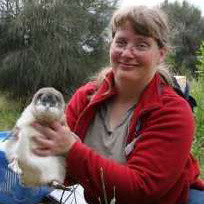 Dr Lynda Chambers
Dr Lynda Chambers
Lynda is a zoologist and climatologist based at the Centre for Australian Weather and Climate Research (Australian Bureau of Meteorology). She specialises in climate impact and adaptation research, in particular its interface with Australian flora and fauna. Lynda has been involved with ClimateWatch since its inception.
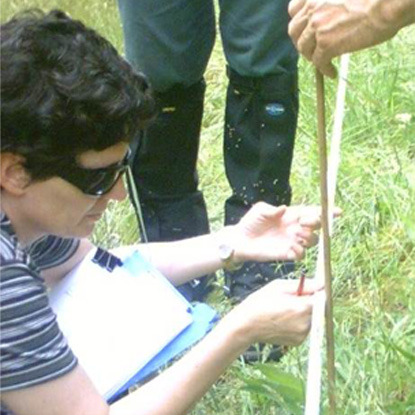 Dr Marie Keatley
Dr Marie Keatley
Marie is a plant ecologist at Parks Victoria and The University of Melbourne whose research focuses on phenology. This means she studies the different life stages of plants, such as flowering and fruiting, to understand how these stages influence one another as well as how climate and other factors influence them. Marie is also one of the founders of ClimateWatch.
ClimateWatch Species Advisors
The role of the ClimateWatch Species Advisors is to provide guidance to ClimateWatch on the selection of indicator species, develop the species information available online, and review ClimateWatch data relevant to their species group. The current species advisors are:
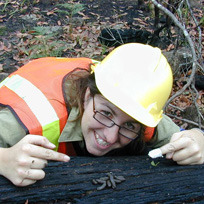 Dr Lisa Cawthen | Mammals
Dr Lisa Cawthen | Mammals
Lisa is a wildlife ecologist working in Tasmania as a researcher, community educator and consultant. Lisa has worked on a range of environmental project but her main research focus has been improving how we manage our forests for wildlife. She recently completed her PhD at the University of Tasmania, researching bats in an effort to conserve them and their habitat.
 Dr Lynda Chambers | Birds
Dr Lynda Chambers | Birds
See above for bio
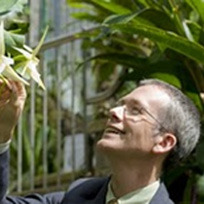 Dr Tim Entwisle | Plants
Dr Tim Entwisle | Plants
Tim is the Director and Chief Executive, Royal Botanic Gardens Melbourne and Cranbourne. He is a scientist and scientific communicator with a broad interest in plants, science and gardens. Tim’s research interest is freshwater algae: since 1984, he has described dozens of new species, two new genera and a new family of algae.
 Dr Volker Framenau | Spiders
Dr Volker Framenau | Spiders
Volker is one of Australia’s leading arachnologists and has significant research experience in the taxonomy and systematics, population biology and behavioural ecology of spiders and other arachnids. Volker is a Director of Phoenix Environmental Sciences, a Western Australian environmental consulting company that conducts biological surveys for mining and infrastructure projects.
 Dr Lisa Gershwin | Jellies and Drifters
Dr Lisa Gershwin | Jellies and Drifters
Lisa is marine biologist in Tasmania and the Director of the Australian Marine Stinger Advisory Services. She has over 18 years of experience in jellyfish research, and has discovered more than 160 new species. Her recent research has focussed on forecasting the deadly irukandji bloom in tropical Australia. Lisa is also a passionate science writer and communicator.
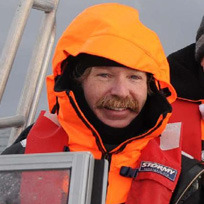 Dr Curt Jenner | Whales
Dr Curt Jenner | Whales
Curt is the Managing Director and Principal Investigator at the Centre for Whale Research, Western Australia. His interests include population biology of humpback whales and blue whales, their migratory pathways, and the relationship of these pathways to oceanographic features. As a Master Mariner, his strong sailing background has been very useful in these pursuits.
 Dr Marie Keatley | Plants
Dr Marie Keatley | Plants
See above for bio
 Dr Anthony Richardson | Jellies and Drifters
Dr Anthony Richardson | Jellies and Drifters
Anthony is marine researcher at CSIRO and a Senior Lecturer at The University of Queensland. He has diverse research interests in marine ecology, climate impacts research and analysis of large datasets using modern data analysis techniques. Anthony’s current research focusses on the effects of environmental variability on marine systems to predict impacts of climate change.
 Dr David Schoeman | Beach Invertebrates
Dr David Schoeman | Beach Invertebrates
Dave is a marine biologist at the University of the Sunshine Coast who researches how marine critters respond to climate change. His research focusses on identifying and quantifying ecological consequences of climate change at scales from the very local to global, and on designing strategies to minimise the loss of ecosystem services.
 Associate Professor Steve Smith | Rocky Shore Marine
Associate Professor Steve Smith | Rocky Shore Marine
Steve is a marine benthic ecologist based at Southern Cross University’s National Marine Science Centre. He specialises in measuring and monitoring the biodiversity of subtropical marine and estuarine habitats. Steve is particularly interested in molluscs, and how these animals respond to natural and human-induced changes to their environment.
 Dr Reid Tingley | Reptiles and Amphibians
Dr Reid Tingley | Reptiles and Amphibians
Reid is a Research Fellow in the ARC Centre of Excellence for Environmental Decisions (CEED) at The University of Melbourne. Reid’s research combines field work with lab experiments and statistical modelling to understand how species traits and human activities influence the processes of invasion and extinction in amphibians and reptiles.
Previous Advisors
Science Advisory Panel (SAP)
David Cantrill (Royal Botanic Gardens Melbourne), Andy Donnelly (Earthwatch), Ian Endersby (Australian Entomology Society), Sue Jenkins (ACF), Andy Lowe (University of Adelaide), James O'Connor (BirdLife Australia), Brett Summerell (Royal Botanic Gardens Sydney), Stephen Williams (James Cook University), Dr Elvira Poloczanska (CSIRO).
Western Australian Science Advisory Panel
Kingsley Dixon (Botanic Gardens and Parks Authority), Rich Weatherill (Earthwatch Australia), Nic Dunlop (Conservation Council WA), Lynda Chambers (Bureau of Meterology Melbourne), Volker Fremenau (WA Museum), Colin Yates (Department of Environment and Conservation), Will Stock (Edith Cowan University), Leonie Valentine (Murdoch University), Kevin Thiele (WA Herbarium), Nicola Mitchell (University of Western Australia), Grant Wardell-Johnson (Curtin University).
Technological Advisory Panel
Paul Flemons (Australian Museum), Donald Hobern (CSIRO, Atlas of Living Australia), Piers Higgs (Gaia Resources), Bill Wright (Bureau of Meteorology), Lynda Chambers (Bureau of Meteorology), Russ Weakley (Max Design), Peter Houghton (Earthwatch), Andy Donnelly (Earthwatch), Chris Gillies (Earthwatch).
Community Engagement Panel
Faycal Benabdellaziz (NAB), Lucy Broad (ABC – Climate Sustainability Project), John Eather (KPMG), Tim Entwisle (Royal Botanic Gardens Melbourne), Mark Forstmann (Totem Films), Nick Lee (ABC – Catalyst), Simon Stroud (Dept of Environment and Climate Change, Parks and Wildlife Group), Andy Donnelly (Earthwatch), Sara Davis (Earthwatch), Rachel Maitland (Earthwatch).
Phenology is the study of periodic plant and animal life cycle events and how these are influenced by seasonal and interannual variations in climate. Examples include bird nesting, insect hatching, plant flowering and fruit ripening. Many studies have already provided insight into the relationship between climate variables, such as temperature and rainfall, to the timing of these phenophases.
Climate change is affecting rainfall and temperature across Australia, and is consequently triggering changes in established flowering times, breeding cycles and migration movements and other phenological changes of our flora and fauna.
Monitoring phenology is important as changes can impact entire biological communities, our food sources and our health. Unfortunately. few significant datasets have been collected and researched in Australia and the Southern Hemisphere. That's where ClimateWatch comes in and enables everyone to contribute to critical climate change research.
